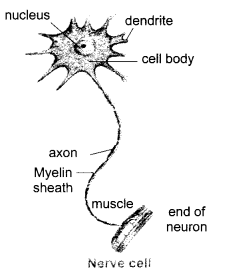Class 7 Science Notes
Chapter 1 Nutrition in Plants

Nutrition :-The mode of taking food by an organism and its utilization in the body is called nutrition.Modes of nutrition :- There are two main modes of nutrition in living organisms. They are autotrophic nutrition and heterotrophic nutrition.Autotrophic nutrition :- is nutrition in which organisms can prepare their own food.Organisms which can prepare their own food are called autotrophs. Ex: PlantsHeterotrophic nutrition :- is nutrition in which organisms get their food directly or indirectly from plants.Organisms which get their food directly or indirectly from plants are called heterotrophs. Ex: Animals
Photosynthesis
Food making process in plants :-
Photosynthesis is the process by which plants prepare their on food by using sunlight, water, carbon dioxide and chlorophyll.Photosynthesis take place in the leaves.★ Sunlight is obtained from the sun.★ Water is absorbed by the roots and transported to the leaves.★ Carbon dioxide is taken from the air through small pores in theleaves called stomata.★ Chlorophyll are the green pigments present in the leaves.
Chlorophyll uses the energy from sunlight to prepare food by using water and carbon dioxide. The food prepared is carbohydrate which is then converted into starch. During photosynthesis oxygen is released.Equation of photosynthesis :- sunlight6CO2 + 6H2O → C6H12O6 + 6O2 Chlorophyl
cells
★ Cells are the most basic unit of living organisms.
★ Bodies of living organisms are made up of tiny units called cells.
Stomata
★ There are tiny pores present on the surface of leaves which are surrounded by guard cells.
★ The exchange of gases (O2 and CO2) takes place through these pores.
Synthesis of proteins :-
The soil has some bacteria which convert nitrogen from the air into usable nitrogen in the soil. Farmers also add fertilisers containig nitrogen into the soil. Plants absorb this nitrogen from the soil along with water and other constituents to prepare proteins and fats.
Heterotrophic Nutrition
In this type nutrition, organisms derive energy from plants and animal sources.
★ Herbivores: The heterotrophs that derive their energy directly from plants are called herbivores.
★ Carnivores: Those who derive their energy indirectly by eating herbivores are called carnivores.
★ Omnivores: They feed on both plants and animals. Example: bear, rat, man etc.
★ Decomposers: They obtain nutrients by breaking down remains of dead plants and animals, includes some bacteria and fungi.






.jpg)






